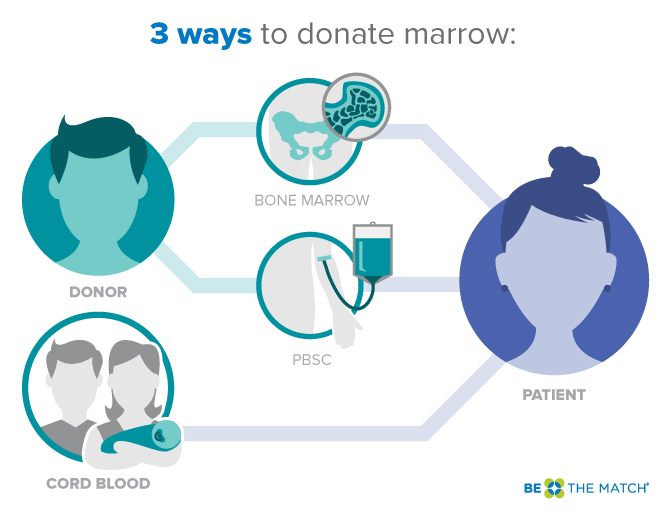By joining the registry you are taking the first step to being the cure for patients with blood cancers like leukemia and other marrow diseases. It is also a commitment to take the next step if a patient needs you to donate your cells for a life-saving bone marrow transplant.
Joining the registry requires a sample of cells, usually collected by swabbing the inside of your cheek. We use this sample to compare specific protein markers, known as human leukocyte antigens (HLA) with HLA markers of patients who need a bone marrow transplant.
Doctors search the NMDP Registry to find donors with HLA markers that match those of their patients. These searches happen on behalf of patients every day, so the most important thing you can do as a registry member is stay committed.
When a registry member matches a patient, there are several steps before donating. These steps are meant to ensure donation is safe for both the donor and the patient.
Once approved to donate, the patient’s doctor will request one of two donation methods: peripheral blood stem cells (PBSC) or bone marrow. The patient’s doctor chooses the donation method that’s best for the patient.
Learn more about the steps of bone marrow or PBSC donation.

How donated cells help patients
A healthy blood system is always making new blood-forming cells. These are necessary for survival. If the body begins making diseased cells or not enough healthy cells, a bone marrow or cord blood transplant may be the best treatment and only potential cure.
During transplant, the donor’s healthy blood-forming cells are put into the patient’s bloodstream. These donated cells move through the patient’s bloodstream and settle in the bones. This is where the donated cells will produce new blood-forming cells. Learn more about how a transplant works.
Each patient needs a donor who is a close HLA match. This is different than blood type. Since HLA is part of your unique DNA, every person who joins the registry gives patients hope for a cure. It’s also why there’s a need for more people to join, especially people whose backgrounds are:
- African American or Black
- Asian or Pacific Islander
- American Indian & Alaskan Native
- Hispanic or Latino
- White
You may never be identified as a match for someone, or you might be one of a number of potential matches. But you may also be the only one on the registry who can save a patient’s life. The most important thing you can do is stay committed and respond if contacted.
While you wait to be called as a bone marrow donor, you can continue to support the cause by:
- Joining our social media communities and sharing your story
- Attending events
- Becoming a volunteer
- Contributing financially to help support blood cancer patients
